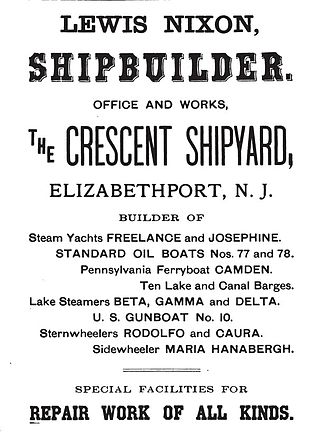
Crescent Shipyard, located on Newark Bay in Elizabeth, New Jersey, built a number of ships for the United States Navy and allied nations as well during their production run, which lasted about ten years while under the Crescent name and banner. Production of these ships began before the Spanish–American War and occurred far before the outbreak of World War I. Arthur Leopold Busch, a recent emigre from Great Britain, started the yard with former Navy Lt. Lewis Nixon in January 1895. Both men previously worked for William Cramp & Sons in Philadelphia. Both Nixon and Busch were regarded to be amongst the best in their respected fields - and what they did at this time - as designers and builders of the latest, most advanced types of ships.

MS Oslofjord was an ocean liner built in 1938 by A/G Weser Shipbuilders, Bremen, Germany, for Norwegian America Line. She was of 18,673 gross register tons and could carry 860 passengers. She would have an uneventful career until 1939 were two separate incidents happened. One from 27 April 1939, where she collided with the American an pilot boat, and another where she struck a mine sinking her.
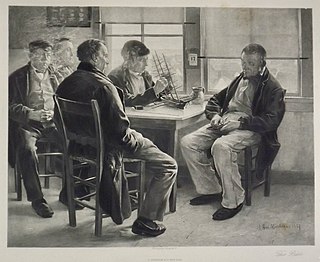
Sandy Hook Pilots are licensed maritime pilots that are members of the Sandy Hook Pilots Association for the Port of New York and New Jersey, the Hudson River, and Long Island Sound. Sandy Hook pilots guide oceangoing vessels, passenger liners, freighters, and tankers in and out of the harbor. The peninsulas of Sandy Hook, and Rockaway in Lower New York Bay define the southern entrance to the port at the Atlantic Ocean.

The Moses H. Grinnell was a 19th-century pilot boat built in 1850 for the New York maritime pilots. She was designed by the yacht designer George Steers. The Grinnell was the first pilot boat to feature a fully developed concave clipper-bow, which was to become the New York schooner-rigged pilot boat's trade mark. This new design was the basis for the celebrated yacht America.

The Thomas S. Negus was a 19th-century two-masted Sandy Hook pilot boat, built by C. & R. Poillon shipyard in Brooklyn in 1873 for the New Jersey maritime pilots. She was built to replace the pilot boat Jane, No. 1, which sank in early 1873. She was the winner of a $1,000 prize at the Cape May Regatta in 1873. She was named for Thomas S. Negus, president of the N. J. Pilots' Commissioners. In 1897, she left the pilot service to prospect for gold during the Klondike Gold Rush.

The Widgeon was a 19th-century yacht and Sandy Hook pilot boat, built in 1855 by James R. & George Steers for Daniel Edgar of the New York Yacht Club and designed by George Steers. She came in 17th in an unsuccessful America’s Cup defense in 1870. Widgeon was sold in 1871 to a group of New York pilots to replace the John D. Jones, which sank in a collision with the steamer City of Washington. New York pilots condemned the Widgeon as unseaworthy in 1879, which sparked a fight for steam pilot-boat service. In 1883 a decision was affirmed by the Supreme Court and the Board of Commissioners of Pilots that pilot boats could be "propelled" by steam.

The Charles H. Marshall was a 19th-century Sandy Hook pilot boat built by Henry Steers in 1860 for a group of New York pilots. She was in the Great Blizzard of 1888, the same year the National Geographic came out with an article about the successful struggle made by the crew of the Marshall. The boat was named in honor of the American businessman Charles Henry Marshall. In the age of steam she was sold in 1896.

The Francis Perkins, No. 13 was a 19th-century Sandy Hook pilot boat, built by Henry Steers in 1866 for a group of New York Pilots. She was considered one of the finest boats ever built. During a snow storm in 1887, the Perkins struck the steamship Aries and sank near the Barnegat shoals.

The Ambrose Snow was a 19th-century Sandy Hook pilot boat, built in 1888 from the C. & R. Poillon shipyard, for a group of New York Pilots. She sank after being struck by the Clyde line freighter Delaware in 1912. She was raised and reentered pilot service. In 1915, the Ambrose Snow was one of only five remaining boats patrolling the port of New York. She remained in operation for thirty-seven years.
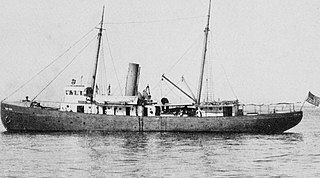
The New York was the first steam pilot boat in the New York harbor. She was built in 1897, by the Harlan and Hollingsworth company at Wilmington, Delaware for the a group of New York Sandy Hook pilots. She was designed by Archibald Cary Smith, who was a prominent naval architect and marine engineer. The New York was retired from pilot service in 1951.

The New Jersey was a steam pilot boat built by A. C. Brown & Sons of Tottenville, Staten Island in 1902 for the New York and New Jersey Sandy Hook Pilots' Association. After twelve years of service, the steamship SS Manchioneal rammed and sank her off Ambrose Lightship in 1914. The New Jersey was replaced by the pilot boat Sandy Hook.

The Edward E. Barrett, or Edward E. Bartlett, was a 19th-century two-masted Sandy Hook pilot boat, built by C. & R. Poillon in 1883 and designed by William Townsend. She helped transport New Jersey maritime pilots between inbound or outbound ships coming into the New York Harbor. She was one of the pilot boats that survived the Great Blizzard of 1888. In the age of steam, the Barrett ended her pilot commission and was sold in 1904.

The Caprice was a 19th-century Sandy Hook pilot boat built in 1871 by Brown & Lovell in East Boston, Massachusetts for Peter McEnany and other New York pilots. In 1876, she was run down and sank, off Bay Ridge, Brooklyn, by the steamship New Orleans. She was raised and was one of the pilot boats that survived the Great Blizzard of 1888. The Caprice was last reported sailing off the coast of New York in 1891.
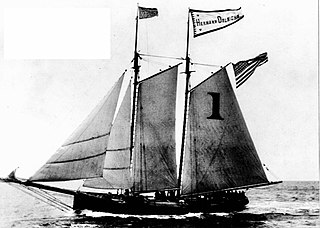
The Hermann Oelrichs was a 19th-century Sandy Hook Pilot boat, built in 1894 by Moses Adams at Essex, Massachusetts for a group of New York Pilots. She helped transport New York City maritime pilots between inbound or outbound ships coming into the New York Harbor. The Herman Oelrichs was said to be the fastest of the New York pilot fleet. She was built to replace the pilot boat Hope, that was wrecked in 1890.

Edmund Blunt was a 19th-century New York pilot boat built in 1858 by Edward F. Williams for the New York Pilots. She helped transport New York City maritime pilots between inbound or outbound ships coming into the New York Harbor. She survived the Great Blizzard of 1888. In the age of steam, the Blunt along with other pilot boats, were replaced with steamboats. She was built to replace the Jacob L. Westervelt, which sank in 1857.

The Mary E. Fish was a 19th-century Sandy Hook pilot boat, built at the Edward F. Williams shipyard of Greenpoint, Brooklyn in 1861 for Richard Brown and the New York Pilots. She was built to replace the Mary Taylor. The Fish was hit and sank by the schooner Frank Harrington in 1885 and replaced by the David Carll.
The James Gordon Bennett was a 19th-century two-masted pilot boat, built in 1870 at the Lawrence & Foulks shipyard. She was named in honor of James Gordon Bennett, Jr., publisher of the New York Herald. She went ashore in 1893 and was rebuilt at the C. & R. Poillon shipyard. In 1897, the James Gordon Bennett was bought by Miller J. Morse of the Atlantic Yacht Club and made into a yacht. He changed her name to Hermit. The New Jersey pilots purchased her in 1901, to replace the David T. Leahy, that was run down by the steamship Alene. The Hermit sank in 1906, when the steamship Monterey ran into her.
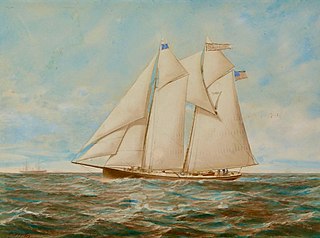
The Edmund Driggs was a 19th-century Sandy Hook pilot boat built in 1864 at the Edward F. Williams shipyard in Greenpoint, Brooklyn. She was built to replace the pilot boat Elwood Walter. The schooner was used to pilot vessels to and from the Port of New York. She survived the Great Blizzard of 1888. In the age of steam, she was sold in 1896.

The James W. Elwell was a 19th-century two-masted Sandy Hook pilot boat, built in 1867 by John A. Forsyth at Mystic Bridge, New London, Connecticut for New Jersey and Sandy Hook maritime pilots. She raced for a $1,000 prize at the Cape May Regatta in 1873. She went ashore and was shipwrecked on North Beach Haven, New Jersey in 1875.
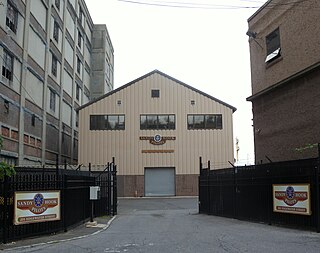
Sandy Hook Pilots Association is in Staten Island, New York, United States. The Association provides pilotage services to all foreign flag vessels and American vessels entering or departing the Port of New York and New Jersey, the Hudson River, the East River, Atlantic City, New Jersey, Jamaica Bay, and Long Island Sound as required by state law. Pilotage is provided on a 24-hour basis, 365 days of the year in all weather conditions and port circumstances. It has 50 employees across its locations and generates $7.15 million in sales (USD).




















